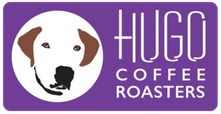Water and Coffee: Keys to a Perfect Cup
Photo Credit: fancycrave1/pixabay.com
Coffee connoisseurs have plenty to deal with while making a perfectly extracted cup of coffee. Finding the right type of coffee, the right grind, and the right brewing setup are all part of the equation. One of the most overlooked aspects of brewing is water temperature. While it may seem like a persnickety part of making coffee, the difference it makes is huge.
Table of Contents
Why does temperature matter?
Fundamentally, coffee is a water extraction of color and flavor compounds from coffee beans. The temperature of the water used affects how readily those compounds are extracted. For example, if you make cold brew, you know that it takes a full day to make a pot of coffee, while a heated brewing method takes only minutes. Using water at the right temperature for the way you brew will help maximize the extraction of your coffee, which results in a more delicious beverage.
Temperature can also affect how your coffee tastes by affecting which flavonoid compounds are extracted and whether or not they survive the extraction. Water that is too cold may not fully extract flavors, while water that is too hot may destroy some of the delicate chemical compounds responsible for flavor. Water that is too hot will result in a cup that is bitter and flat.
What is the right temperature?
The answer partly depends on your taste, but most experts recommend water between 195°F and 205°F degrees. This temperature is consistent, regardless of most brewing methods. Whether you’re making espresso at high pressures or cowboy coffee over a fire, you want your water to be hot but just under boiling. If you can use a kettle or device with temperature control, you should use it to get an exact temperature, but in the absence of temperature control, taking your water off the heat just before boiling should do the trick. A simmering pot of water is approximately 200°F, so it should work perfectly.
Are there exceptions?
The most obvious that comes to mind is cold brew. As the name implies, cold brew should not be brewed at 200°F. Cold brew can be made with room temperature water, which should lessen the acidity of the coffee. In general, the cooler the water you use, the longer your brew will take. For example, at room temperature, our cold brew coffee packs will take approximately 12 hours to extract flavor from the coffee beans. Brewing in the fridge will add 3-5 hours of brewing time, as cooler water increases the time necessary for extraction.
Serving Temperature
Now that we have established the ideal temperature for extracting maximum flavor from our coffee beans let’s talk about serving it. A cup of coffee served at 205°F is scaldingly hot. McDonald’s used to serve their coffee nearly that hot, and it resulted in 3rd-degree burns on their customers (one of them even won a famous lawsuit because of it).
You want your coffee to cool before serving it. Some of this cooling will occur during the brewing process. As the coffee brews off of heat, it will naturally cool. Once the coffee cools to a temperature of approximately 175-180°F, it is cool enough to serve. At this temperature, it will still be hot and fresh, but not so warm that it scalds the mouth.
Some experts recommend serving your coffee even cooler, between 130°F and 150°F. At this cooler temperature, the flavor of the coffee will change and reveal subtler notes. The experts may believe that, but most people aren’t coffee sommeliers, and lukewarm coffee might not hit the spot as much as a warmer cup. Additionally, hot coffee will continue to cool as it is enjoyed.
Coffee served at 180°F may easily cool to 130°F over the course of a conversation, so as long as you plan on sipping your coffee instead of quaffing it in one go, we recommend serving your coffee at 180°F and allowing it to cool on its own.
How do I control these temperatures?
As the coffee industry is a sprawling arena of competing products, there is no lack of accessories you can buy to craft your perfect cup of coffee. The simplest and most versatile accessory is a simple kitchen thermometer. A probe thermometer can be dropped into a kettle or pot and set to sound an alarm as soon as a temperature is reached. Even better, you can use it in countless other kitchen applications, such as cooking poultry, barbecue, or candy.
For a coffee-specific product, the electric kettle is your best bet. Many models now allow you to control the temperature the kettle will reach before automatically shutting off. This is a perfect feature for people interested in making pour-overs or French press coffee. You heat your water to the perfect temperature, then immediately brew by adding your water to another container. Many models of coffee makers function essentially the same way, and more expensive models will allow you to control the temperature of your brew.
Your last option is used during the serving side of the equation. Cup warmers are becoming a popular choice for coffee lovers, as they allow you to maintain your mug at the perfect temperature. Though they remain a novelty gift for now, we may see their popularity explode as more users decide they can’t stand drinking tepid coffee any longer.
The most important thing to remember is that your coffee should never be boiling. Not only is boiling coffee unsafe to serve but boiling coffee is too hot for many of the delicate flavors to survive the brewing process. Coffee that is brewed too hot will result in bitter, flat coffee. A simmer is hot enough for brewing without sacrificing quality.
